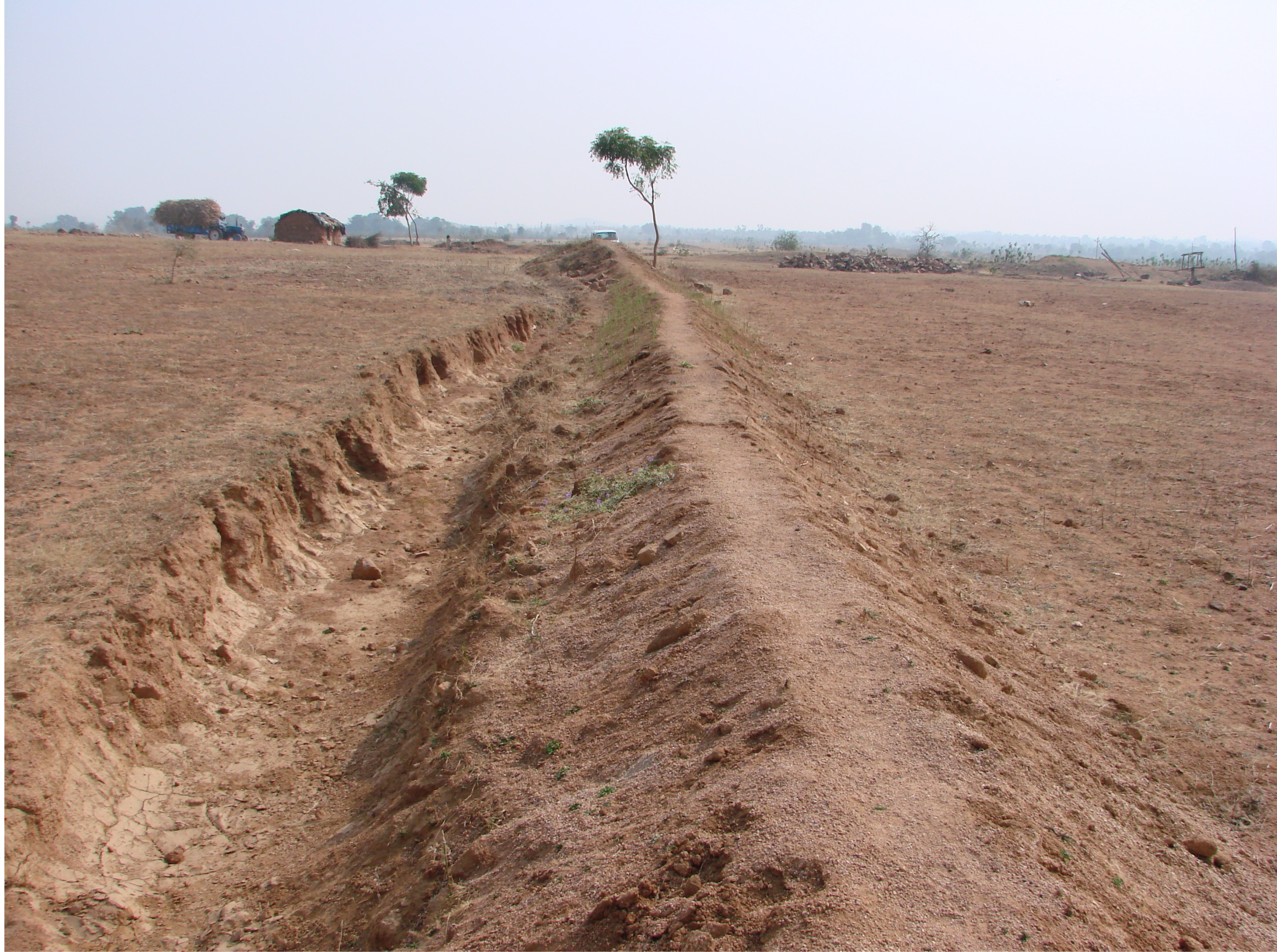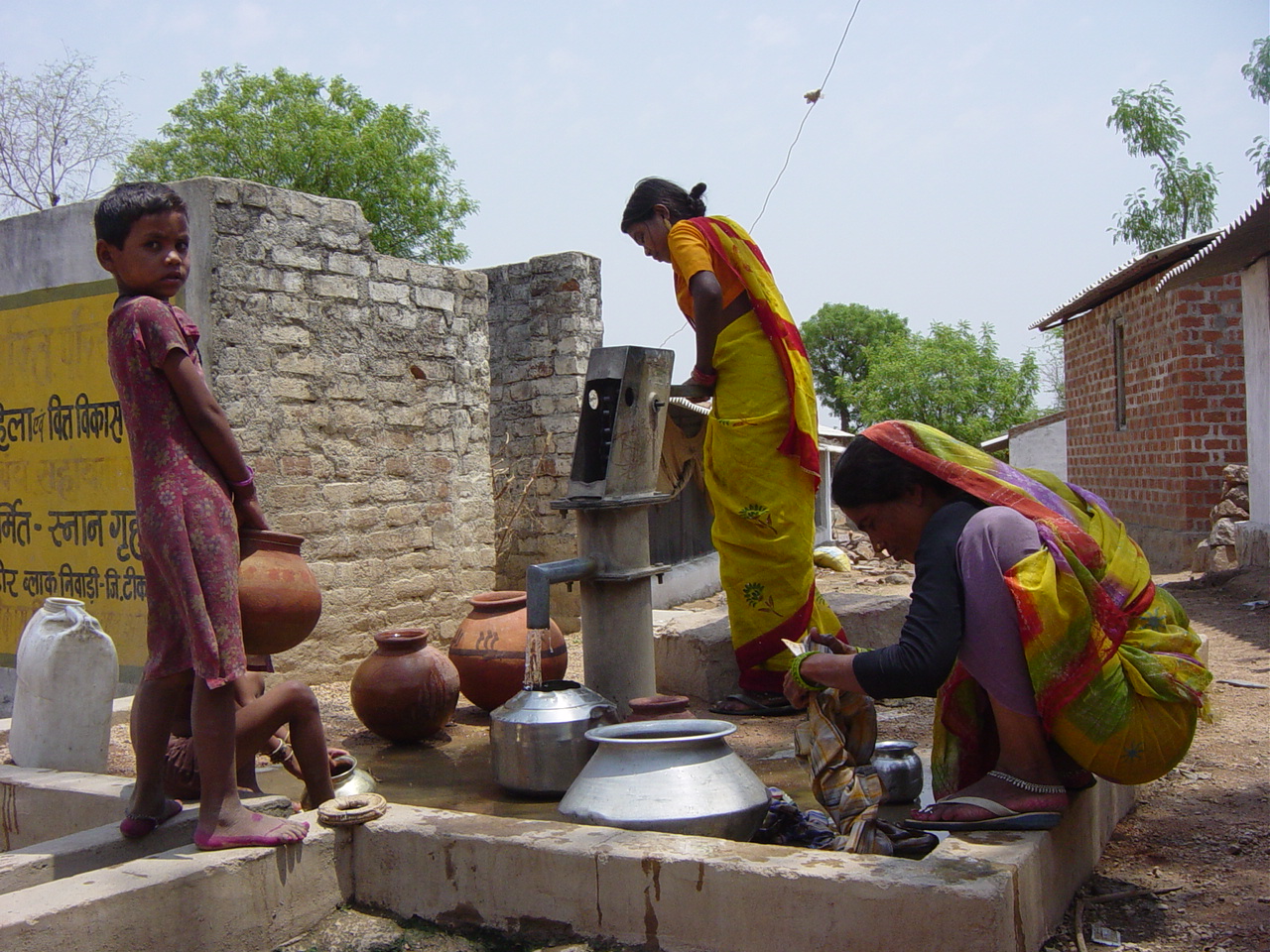Gender Inequality in
the Context of Climate Change
The socio-economic status and gender inequalities of different regions
have a crucial impact on regional climate risks and vulnerabilities.
Climate change limits the choices of the human population and does not
only affect the agriculture sector, but also damages energy, food
security, human health and infrastructure and may even widen economic
disparity throughout the world.
Intensive research on the effect of climate changes on women have
established the fact that women in severe climatic conditions are the
worst affected - being the marginalised strata of the society - without
much livelihoods options. Climate change thus adversely affects the
existing pattern of vulnerabilities.
Rural women in the developing countries form a major labour force in the
agricultural sector. They are the primary producers of food. The
agriculture sector is badly inflicted with extreme weather situations,
like severe draught and uncertain rainfall. The unpredictable climatic
conditions result in the impove rishment of the labour class, especially
women, who play a major role in supporting households and communities.
rishment of the labour class, especially
women, who play a major role in supporting households and communities.
Almost 70% of the world’s poor are women who are also the most exposed
to climate change vulnerabilities due to their gender-specific roles and
responsibilities. Their problems are further compounded by lack of
education and information and limited mobility. Since it is the women
who use and manage natural resources differently from men and the
degradation of natural resources affects them differently, women’s
disadvantages may increase with the change in or loss of natural
resources associated with climate change.
Bundelkhand: A Region Facing Severe Water Crisis
Bundelkhand is situated in Central India, comprising six districts of
Madhya Pradesh (Datia, Tikamgarh, Panna, Damaoh, Chhatarpur and Sagar)
and seven districts of Uttar Pradesh (Jhansi, Jalaun, Hamirpur, Lalitpur,
Banda, Chitrakut and Mahoba). This region has been ravaged by severe
draught for past many years, leading to mass migration, starvation
deaths, suicides and even mortgaging of women (EPW, 2010). Historically,
Bundelkhand was known to have a drought in 16 years in the 18th and the
19th centuries. This has increased three times from 1968 to 1992. The
situation is further aggravated with the past four years that have been
witnessing continuous drought.
The prevailing drought conditions have destroyed the entire economy of
the region, resulting in massive migration to the cities. The primary
economic activity of the Bundelkhand region is agriculture and
continuous failure of rainfall has meant that the agricultural land can
neither provide work for landless labourers, nor can it provide food.
Mapping the Gender Impact of Climate Change in Bundelkhand
The women population in Bundelkhand and other semi-arid regions of India
are primarily engaged in agriculture. However, intermittent draughts
have dried up the water sources, forcing the rural women and young girls
to walk ever longer distances for water.
In Bundelkhand, women have fewer economic resources, social benefits and
political powers that further restrict their capacity to respond in
situations of environmental risk. Other aggravating factors are the
scant dissemination of emergency information among women and the fact
that many women and girls can neither read nor write, a situation that
is worse in monolingual indigenous populations. The inequalities among
both the genders are deepened by the impacts of climate change and
limiting the adaptation and mitigation strategies.
Women, Health and Climate Change
Bundelkhand is also inflicted by a high rate of child mortality, extreme
climatic conditions being one of the reasons. Going by the National
Family Health Survey (NFHS), the nutritional status of children in
Bundelkhand is very poor and 57% of all children less than four years of
age are under weight and under nourished. Water-borne diseases and other
illnesses caused by poor sanitation such as diarrhea and respiratory
infections are the main causes of mortality in young children.
Very few facilities are available to the population and health care is
virtually non-existent. Water-related illnesses such as chronic diarrhea
and malaria are particularly prevalent and affect a large percentage of
the population. Infant and maternal mortality is high and the use of
family planning measures is yet to be widely adopted in remote areas.
Gender discrimination in the allocation of resources, including those
relating to nutrition and medicines, further puts girls at greater risk
than boys. Women and girls also face barriers to accessing healthcare
services due to a lack of economic assets to pay for healthcare, as well
as cultural restrictions on their mobility, which may prohibit them from
travelling to seek healthcare. In the Bundelkhand region, the ratio to
the population and number of Primary Health Centres is very low. The
aged are at the highest risk from climate change-related health impacts
like heat stress and malnutrition. Elderly women are likely to be
particularly vulnerable, especially in Bundelkhand.
Women, Agriculture and Climate Change
Although rural women and men play complementary roles in guaranteeing
food security, women tend to play a greater role in natural resource
management and ensuring nutrition. In Bundelkhand, women often grow,
process and manage natural resources and are responsible for raising
small livestock, managing vegetable gardens and collecting fuel and
water. Women provide a higher percentage of labour in agriculture and
are responsible for food production. Men, in contrast, are generally
responsible for cash cropping and larger livestock. Women’s involvement
in an agricultural capacity is most common in regions likely to be most
adversely affected by the impacts of climate change, particularly in
semi-arid regions of India. In these contexts, responsibility for
adaptation is likely to fall on their shoulders – including finding
alternative ways to feed their family.

Women, Water and Climate Change
As is the case in many other regions of developing countries, women in
Bundelkhand also assume the primary responsibility for collecting water
for drinking, cooking, washing, hygiene and raising small livestock,
while men use water for irrigation or livestock farming.
Climate change may also lead to increasing frequency and intensity of
floods and deteriorating water quality. This is likely to have a
particularly harsh effect on women and girls because of their distinct
roles in relation to water use and their specific vulnerabilities in
drought-affected regions.
According to the Samra Committee Report, 70% of tanks and ponds have
dried up during the period 2003-08 due to the prevailing drought
conditions. This has caused severe drinking water shortage in the
region, forcing the women to walk miles in search of drinking water.
Young girls are forced to skip schools to look for water (WEDO 2003).
According to Sharda Devi, President, Samagra Jal Vikash Samiti of Pipra
Village, women are the water providers for their families in
Bundelkhand. Water crisis has always affected the women first because of
their well-defined gender roles.
Gendered Impacts of Climate Change on Wage Labour
Women’s access to economic resources in terms of income and property
ownership – including land – is unequal, particularly in developing
countries. A gender gap in earnings persists across almost all
employment categories, including informal wage employment and
self-employment (International Labour Organisation 2007). Women comprise
a majority of those working in the informal employment sector, which is
often the worst hit by climate change, for example, agriculture. It is
increasing the already unequal access to resources and diminishing their
capabilities to cope with unexpected events/disasters or adapt to
change.
In the Bundelkhand region, the involvement of women in work that has a
non-economic return is very high. If we look at the agricultural
workforce, women constitute a majority of agricultural labour in the
field. However, their decision in adopting climate-friendly technologies
is limited. In livestock and fodder management, women spend more time
than their male counterparts. In Bundelkhand, availability of fodder is
decreasing, adding to the crisis in livestock management. Women are thus
forced to walk even longer distances to collect fodder for their cattle.
Adaptation Measures, a Gender Perspective
It is important that the community adapts to the climate change or else
survival becomes increasingly difficult. At the household level, the
ability to adapt to changes in the climate depends on control over land,
money, credit and tools; low dependency ratios; good health and personal
mobility; household entitlements and food security; secure housing in
safe locations and freedom from violence.
As such, women are often less able to adapt to climate change than men,
since they represent the majority of low-income earners. In Bundelkhand,
the women generally have less education than the men and are thus less
likely to be reached by extension agents and they are often denied the
rights to property and land, which makes it difficult for them to access
credit and agricultural extension services. Bundelkhand is primarily an
agro-based community where men are the decision makers in technology
adoption and seed types. As a result, new agricultural technologies –
including the replacement of plant types and animal breeds with new
varieties intended for higher drought or heat tolerance – are rarely
available to women farmers.
Adaptation Strategies
Despite their limited capacity to getting used to the existing and
predicted impacts of climate change, many women are now adapting to the
changing climate and are clear about their needs and priorities. A
recent participatory research project by ActionAid and Institute of
Development Studies clearly shows that women in rural communities in the
Ganges basin in India, Bangladesh and Nepal are adapting their practices
to secure their livelihoods, in the face of erratic climate changes. The
women who took part in the research described various adaptation
strategies, like changing cultivation to flood- and drought-resistant
crops, or to crops that can be harvested before the flood season, or
varieties of rice that will grow high enough to remain above the water
when the floods come (ibid).
Climate Change Adaptation Needs and Priorities for Women in Bundelkhand
regions
Women from Bundelkhand need information on low energy consuming
measures, or even climate friendly technologies, drought-resistant crop
varieties and agricultural practices. They basically need skills and
knowledge training to learn about the proper use of manure, pesticides
and irrigation. The priority will be to:
• Better access to climate change information and related knowledge and
skills
• Alternate livelihood options:
¨ Through knowledge and resources for crop diversification and adaptive
agricultural practices
¨ Through access to irrigation
¨ Through locally available training
Gender-sensitive priorities and processes need to be mainstreamed at all
levels of negotiations and decision-making around climate change
mitigation and adaptation. It is of utmost importance for all the
governments to ensure that gender concerns are reflected in policies and
related programming under the climate change arena.
Among development and environmental NGOs and organisations, there is a
need to develop a common understanding on the linkages between climate
change and gender, using the language that climate change specialists
and policy makers can understand.
q
Nibedita Phukan
nphukan@devalt.org
References
Study on Bundelkhand by Dr Yogesh Kumar and Rakesh Nath Tiwari
(Supported by Planning Commission) 2001
Drought by Design: The Man-made Calamity in Bundelkhand, Economic and
Political Weekly, Vol XLV No 5, January 30,2010
http://nraa.gov.in/Drought%20 Mitigation%20Strategy%20for%20
Bundelkhand.pdf
Resource Guide on Gender and Climate Change, UNDP, 2009
Back to Contents
 rishment of the labour class, especially
women, who play a major role in supporting households and communities.
rishment of the labour class, especially
women, who play a major role in supporting households and communities.